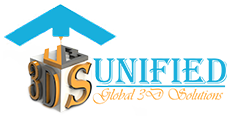

FDM (Fused Deposition Modeling) is an additive manufacturing method that creates parts additively using a filament. The process deposits the filament layer by layer, according to your 3D model.
| Lifecycle | Lead Time | Materials | Resolution |
|---|---|---|---|
| Early stage prototyping | 24 hours | PLA, ABS, PETG, PC, Nylon, ASA, PEI, PEEK, ABS-CF, PETG-CF, PLA-CF, PCL | 0.05-0.2 mm |
FDM printers are working by addition of layers using FDM filaments. It is one of the most used additive manufacturing technologies, appearing as a real alternative to traditional manufacturing processes.
During the FDM 3D printing process, the filament is extruded through a nozzle which melts while being gradually deposited in a structured way on the build platform until the object is finished. This process works by material being melted and extruded through a nozzle to 3D print a cross-section of an object each layer at a time. The extruder of the 3D printer is attached to a system with three different axes: X, Y, and Z directions. When the material is melted and extruded, it is deposited in predetermined locations on the 3D printing bed, where it cools and then solidifies. The bed lowers for each new layer and this whole process repeats until the object is completed.
Our FDM 3D printing machines will allow you to rapidly verify your designs with low-cost prototypes. Simply upload your parts, get a quote, and go into production in less than 5 minutes.
| Requirement | Specification |
|---|---|
| Maximum build size | 500 x 500 x 500 mm |
| Standard lead time | 1 working day |
| Dimensional accuracy | +/- 0.4 mm or +/- 0.2% per cm |
| Layer height | 50-300 μm |
| Infill | 25-100% |
In the table below, we break down the main differences between a typical desktop FDM machine and an industrial one.
| Property | Industrial FDM | Desktop FDM |
|---|---|---|
| Standard accuracy | ± 0.15% (lower limit ± 0.2 mm) | ± 1% (lower limit: ± 1.0 mm) |
| Typical layer thickness | 0.18 - 0.5 mm | 0.10 - 0.25 mm |
| Minimum wall thickness | 1 mm | 0.8 - 1 mm |
| Maximum build envelope | Large (e.g. 900 x 600 x 900 mm) | Medium (e.g. 200 x 200 x 200 mm) |
| Common materials | ABS, PC, ULTEM | PLA, ABS, PETG |
| Support material | Water-soluble/Break-away | Same as part (typically) |
| Production capabilities (per machine) | Low/Medium | Low |
| Machine cost | $50000+ | $500 - $5000 |
The table below summarizes the main characteristics of FDM 3D printing.
| FDM | |
|---|---|
| Materials | Thermoplastics (PLA, ABS, PETG, PC, PEI etc) |
| Dimensional Accuracy | ± 0.5% (lower limit ± 0.5 mm) - desktop ± 0.15% (lower limit ± 0.2 mm) - industrial |
| Typical Build Size | 200 x 200 x 200 mm - desktop 900 x 600 x 900 mm - industrial |
| Common layer thickness | 50 to 400 microns |
| Support | Not always required (dissolvable available) |
FDM is more cost-effective than any additive manufacturing technology and makes use of an extensive variety of thermoplastic materials. Manufacturing with FDM means shorter lead times, as well.